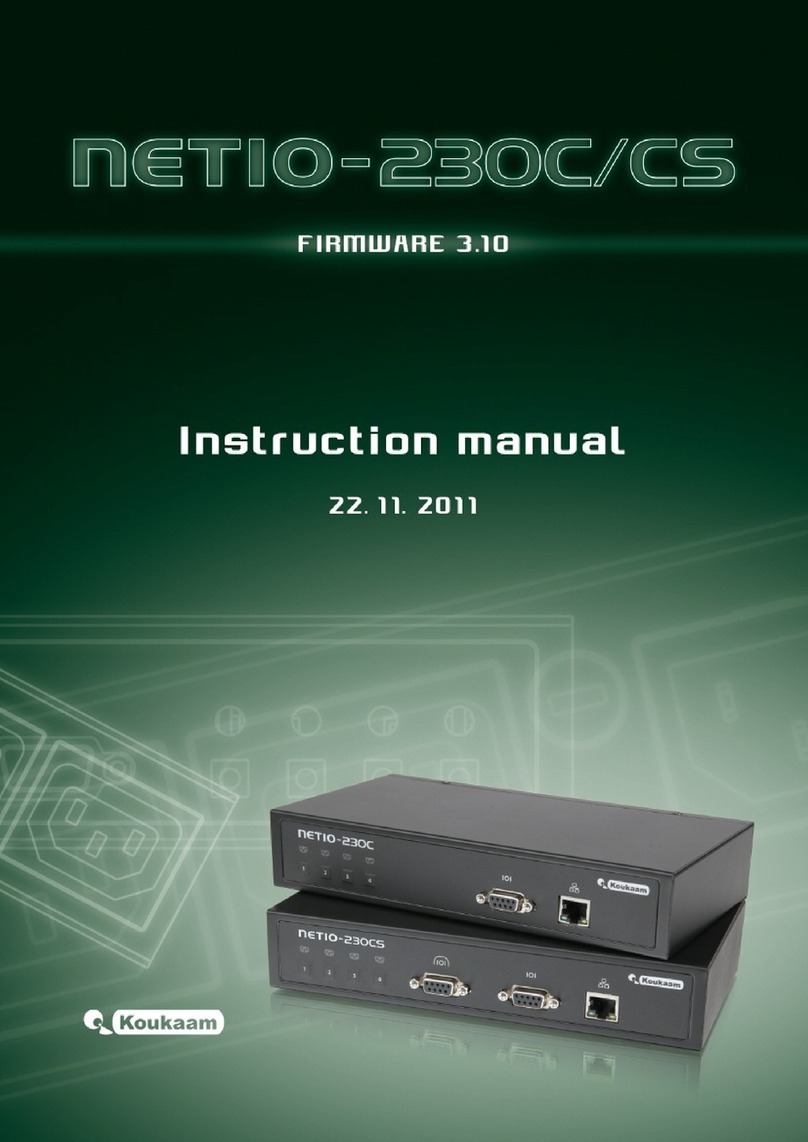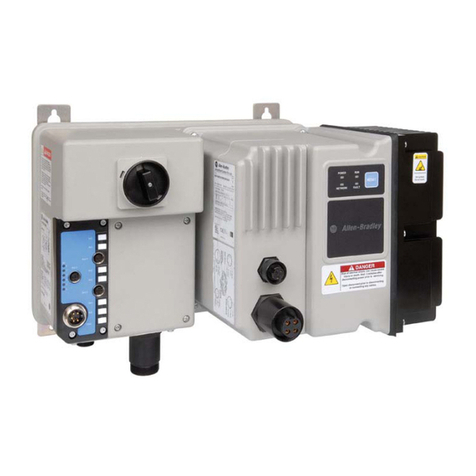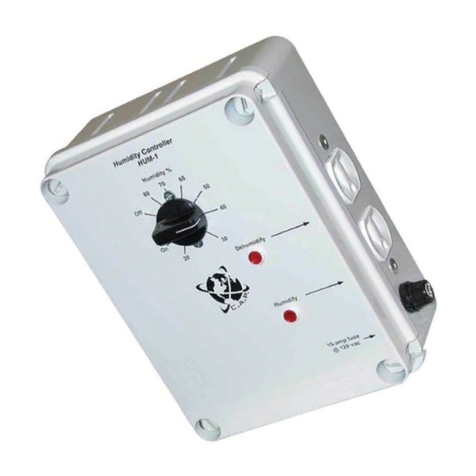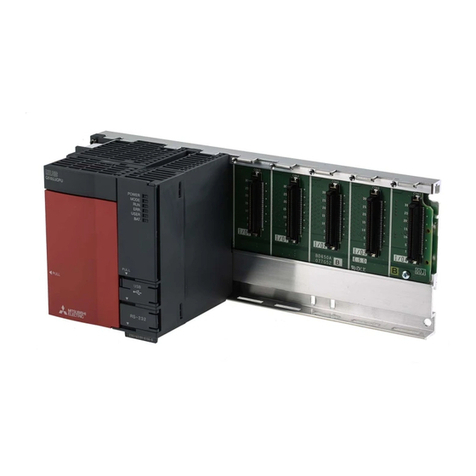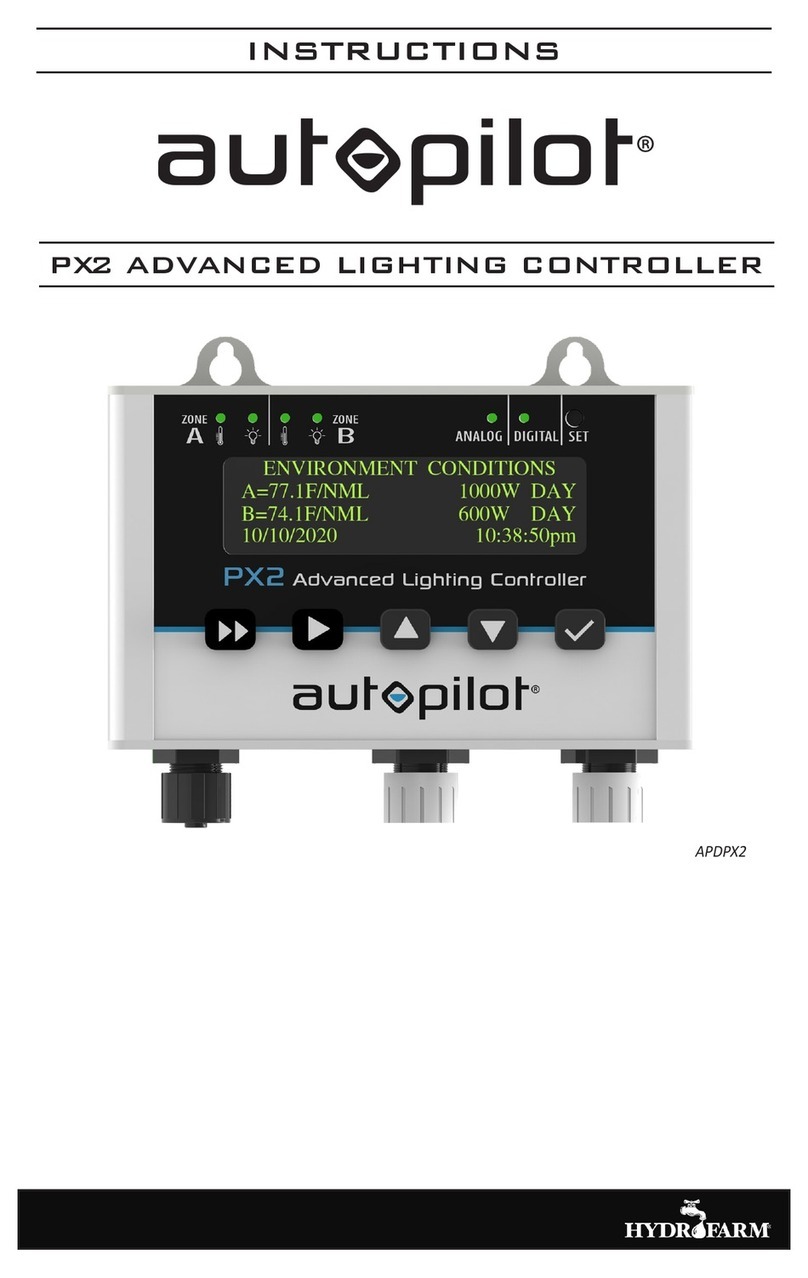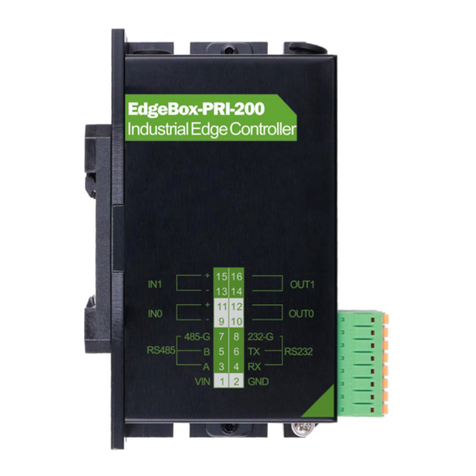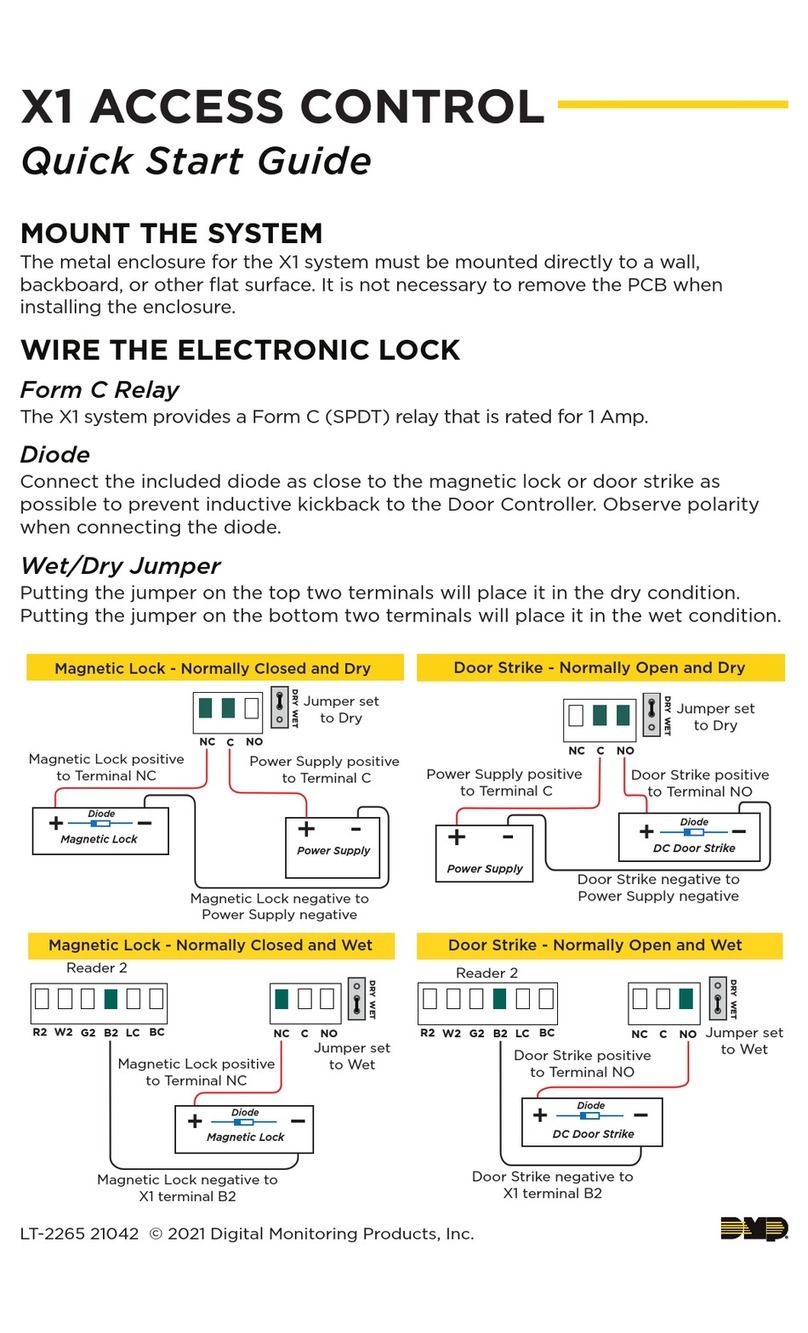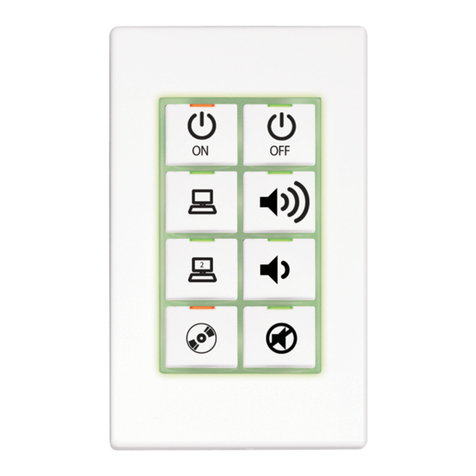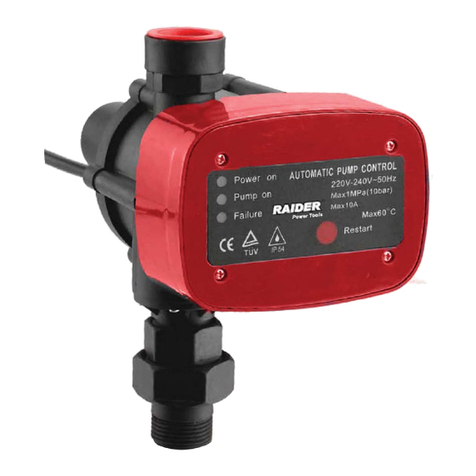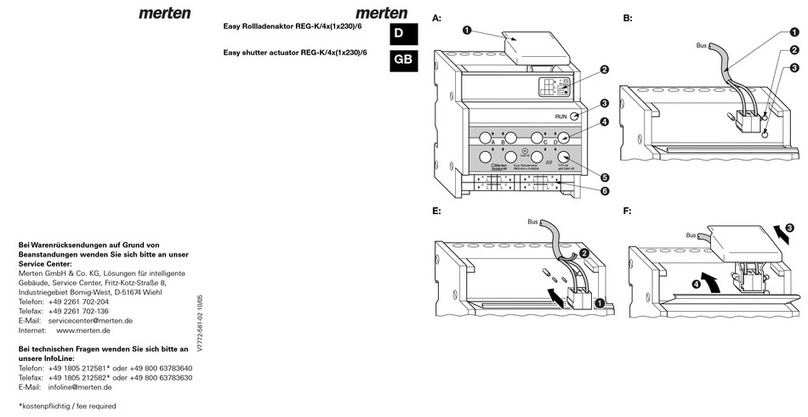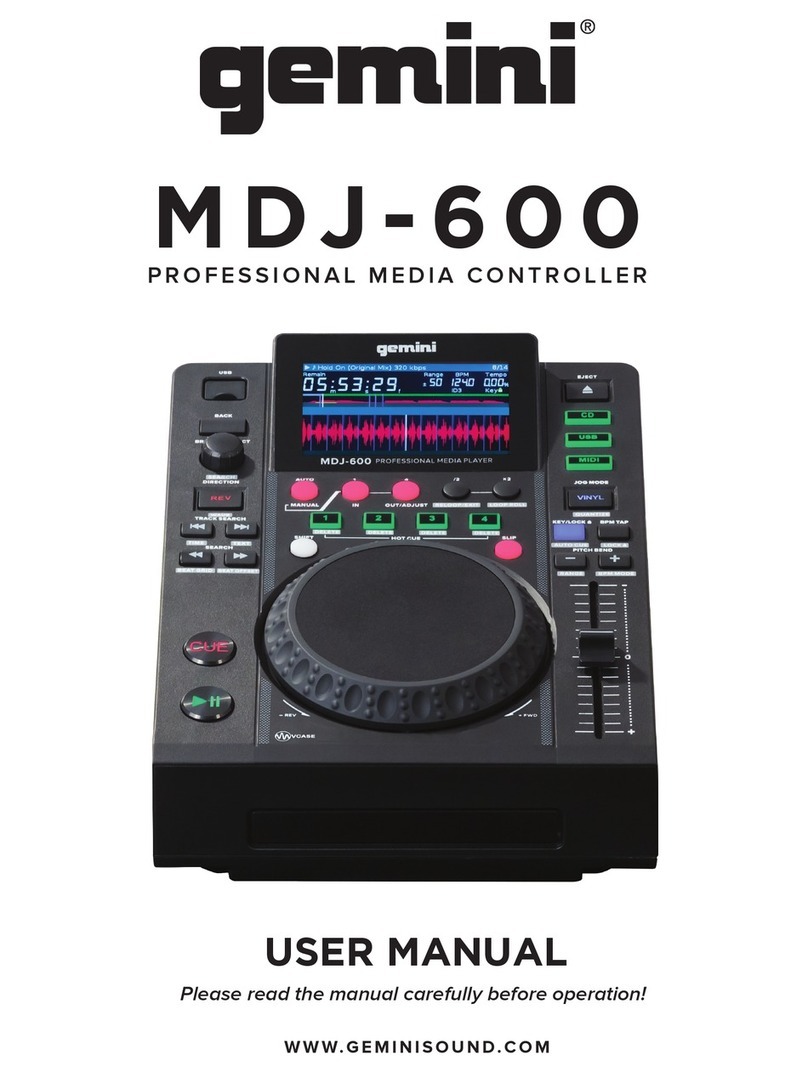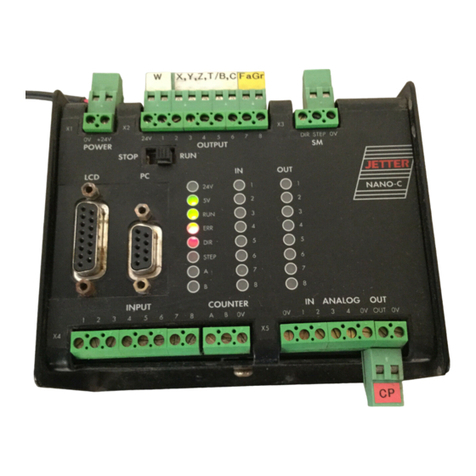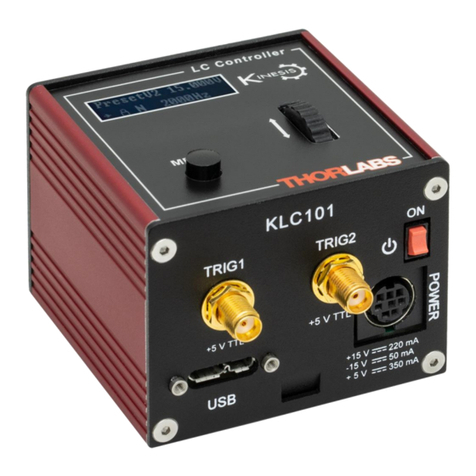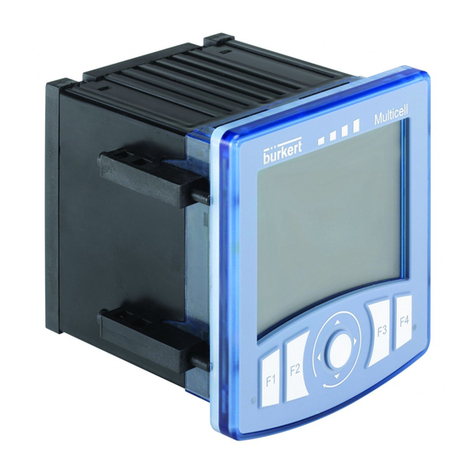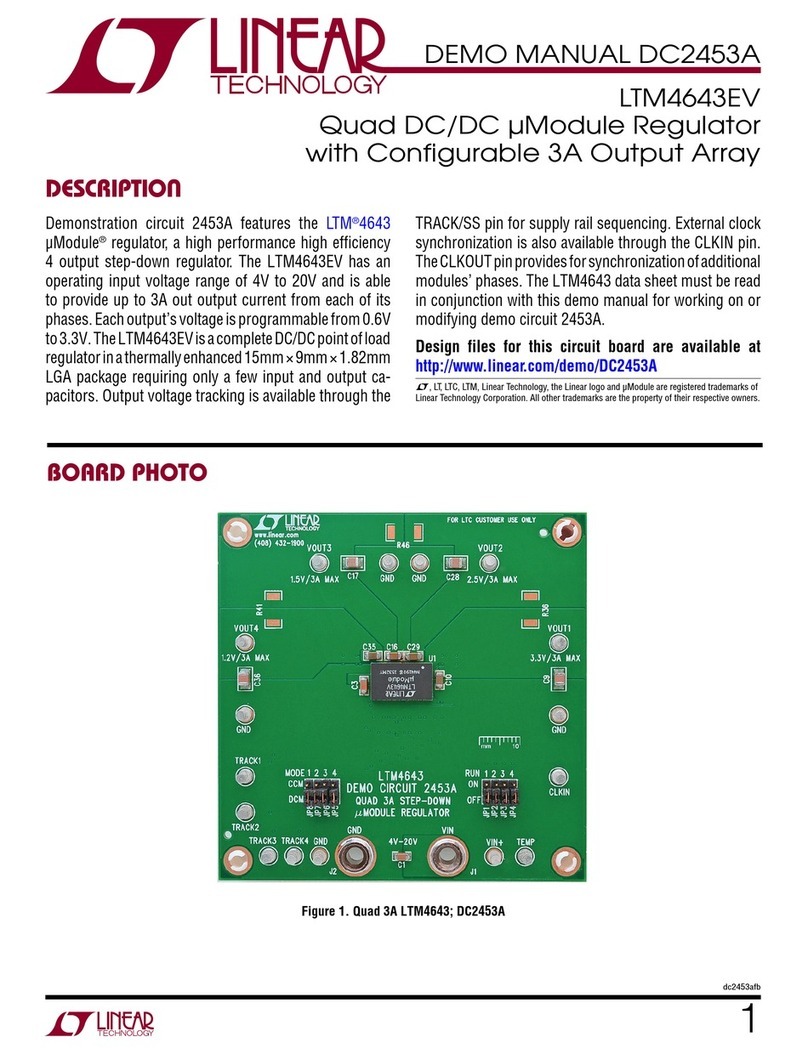Glensound Electronics ISDN GSGC6 User manual

GGLENSOUND ELECTRONICS LTD Tel: +44 (0) 1622 753020
6 BROOKS PLACE, MAIDSTONE, KENT, ME14 1HE ENGLAND +44 (0) 1622 752662
Visit our Website at www.glensound.co.uk Fax: +44 (0) 1622 762330

G
GG
GGLENSOUND ELECTRONICS LTD
___________________________________________________________________________
Date 03/07/97 File AP06-145 Issue 9
___________________________________________________________________________
GSGC6 & GSGC7
ISDN MIXER & CONTROLLER
PRODUCT DETAILS
GENERAL (Pink Sheets)
Approvals AP72-02
General Information AP72-03
GSGC6 (White Sheets)
Front & Rear Views A2-12822
Block Diagram A3-12821
Installation AP72-04
Audio I/P & O/P Circuit Diagram A2-12902
PSU Circuit Diagram A3-12823
Connector Pin-Outs AP40-48 (2 Pages)
The GSGC6 Command Language AP72-01(12 Pages)
Specification AP72-07
GSGC7 (Yellow Sheets)
General & Installation Information AP72-05
GSGC7 Front View A4-12866
Operating Instructions AP72-06 (5 Pages)

File AP72-02
APPROVALS
_____________________________________________________________________________
CE
Both the GSGC6 and GSGC7 conform to the requirements of EMC DIRECTIVE 89/336/EEC
Emissions StandardsEN 50081-1
Immunity StandardsEN 50082-1
_____________________________________________________________________________
BABT APPROVAL REQUIREMENTS FOR THE UNITED KINGDOM
The GSGC6 incorporates a Dataflex Design ISDN Basic Rate Module which has been approved
by the British Approvals Board for Telecommunication (BABT) for connection to the Integrated
Services Digital Network (ISDN). The following approval number has been given to this
product:
NS/3010/5/P/603977
_____________________________________________________________________________
NET 3 APPROVAL
The GSGC6 is fully approved for use as a digital terminal adapter on any PSTN using a basic
rate access interface compatible with CCITT I.420 (NET3).
_____________________________________________________________________________
BRIDGING CTR APPROVAL
The terminal adaptor used in this unit is the Dataflex IM90C module. This module has bridging
CTR approval so that the GSGC6 units are approved for use in any country in the EEC
_____________________________________________________________________________

File AP72-03 issue 3
GENERAL INFORMATION
GSGC6
This unit is a 1U subrack designed to provide ISDN facilities in a studio, it contains a
terminal adapter, a mains power supply, some control electronics and space for 1 or 2 codec
type cards.
The terminal. adapter is a 'Dataflex' IM90 module. This is a twin unit capable of dealing with
both B channels of an ISDN 2 circuit at the same time. If the GSGC6 is fitted with 2 codec
cards it can be considered as two completely independent units. These are known as PORT 1
and PORT 2. The front panel (See drawing number A2-12822) has LEDs to show the state of
port 1 and port 2.
There are three ways of controlling a GSGC6:-
First, it is possible to use the unit with very little extra equipment. The GSGC6 can be
set to auto-answer incoming calls. It is also possible to store two numbers, one in port
1 and one in port port 2. Either number will be automatically dialled if the
corresponding DC loop is made on a rear panel connector
Second, it is possible to remote control it from a computer terminal using the 2 off
RS232 connectors fitted on the rear panel. The command language used, is listed later
in this book.
Finally we manufacture a dedicated controller type GSGC7 .
GSGC7
This unit has been specifically developed to control the GSGC6. Our drawing number A4-
12866 shows the general facilities. It would normally be positioned in a studio control room
and remote control the GSGC6 which would be located in an apparatus room.
Used to originate and answer calls , it contains a dial, a display, and some LEDs. These LEDs
indicate the state of the ISDN line and the Codec
Up to 30 ISDN numbers can be held in non volatile store. These can be given names as well
as numbers to help the operator.
If the GSGC6 is fitted with two codecs, it is preferable to have two GSGC7s. These can then
be used simultaneously in two different studios producing two totally independent
programmes.



File AP72-04 iss 4
GSGC6 INSTALLATION
GENERAL
The GSGC6 is a 1U subrack designed to be fitted in an equipment rack or apparatus room.
Although there are some indicators and 3 controls on the front panel, it is not necessary to
access these.
MAINS
An IEC mains connector with a retaining clip is provided on the rear panel. The mains earth
is internally connected to the metalwork. A terminal binding post is also provided adjacent to
the mains connector to permit additional earth bonding.
ISDN CONNECTION
Connection to the ISDN2 S bus is via a standard RJ45 socket. A 3 metre lead is provided with
the GSGC6. If a longer lead is required or an extension is fitted to the ISDN2 point be very
sure to use only cables to the correct specification.
AUDIO
Audio circuits are balanced zero level on 3pin XLRS. The inputs are fixed sockets and the
outputs are fixed plugs. Maximum digital code is sent with a +14dBu signal. The GSGC6
does not contain a limiter so any input greater than +14dBu will be clipped by the digital
system. It is worth noting that digitally clipped signals can often upset the codec at the other
end of the circuit. This is particularly true for G722 codecs with statistical frame locking. It is
therefore good practise to ensure that the levels sent to the GSGC6 do not exceed +14dBu.
CONTROL
Control of the GSGC6 can be from a computer system or from our dedicated controllers type
GSGC7. The control ports are RS232 type ports on a 9 pin D fixed sockets wired to the IBM
PC standard. A separate control port is provided for each codec position.
DC LOOPS
A further 15pin D fixed plug is provided for each port. These provide various loop closures
and can be used to operate lamps or other studio equipment. In addition switches can be fitted
in the studio to:- 1)send a programmable DTMF tone 2) 'Hang Up' the terminal adapter 3) dial
a previously stored ISDN number.
AUX DATA
When the GSGC6 is fitted with an MPEG Codec an extra 9 pin D fixed socket is fitted. This
is the Aux Data connector and provides an RS232 type data path to a similarly equipped
codec at the other end of the ISDN circuit. It operates at a fixed 9600 baud and is compatible
with some other manufacturers codecs.
CODECS
The GSGC6 will normally be fitted with the codecs as ordered with the equipment. It is
however simple to add or change the codecs. This can be done by removing the top cover of
the GSGC6. The codecs are mounted one above the other and are connected to the main PCB
via 60pin IDC leads. The lower codec is connected to port 1 and the upper codec is connected
to port 2.



GLENSOUND ELECTRONICS LTD
WIRING INFORMATION FOR GSGC6 1U ISDN TA/CODEC
NOTES 1) V = VARICON. D = D CONN. X = XLR. P = FIXED PLUG. S = FIXED SOCKET
2) TW = TWISTED WIRES, TP = TWISTED PAIR, SP = SCREENED PAIR, SS = SINGLE SCREENED WIRE
File Number AP40-48 Page 1 of 2 Date 18/06/96 Issue Number 4
CONN
No
TYPE FUNCTION WIRED TO TYPE COLOURS
1&3 X3S Audio Inputs Main PCB GSJ78
Pin 1 = Ground
Pin 2 = In Phase
Pin 3 = Mate
2&4 X3P Audio Outputs Main PCB GSJ78
Pin 1 = Ground
Pin 2 = In Phase
Pin 3 = Mate
5D15P DC Loops Port 1 Printed Down GSJ78
Pin 1 = +12v Aux Power Out
Pins 2,9 = I/P LOOP Send DTMF 1
Pins 3,10 = I/P LOOP Hang Up
Pins 4,11 = I/P LOOP Dial Stored No.
Pins 5,12 = O/P LOOP- DTMF Rcvd
Pins 6,13 = O/P LOOP- 2sec Pulse
when Framed
Pins 7,14 = O/P LOOP- Codec Framed
Pins 8,15 = O/P LOOP- TA Locked
6D9S RS232 Control Port 1 (IBM PC Std) Printed Down GSJ78
Pin 1 = Carrier Detect (o/p)
Pin 2 = Receive Data (o/p)
Pin 3 = Transmit Data (i/p)
Pin 4 = Data Term Ready (i/p)
Pin 5 = Ground
Pin 6 = Data Set Ready (o/p)
Pin 7 = Request to Send (i/p)
Pin 8 = Clear to Send (o/p)
Pin 9 = Ring Indicator (o/p)
7D15P DC Loops Port 2 Printed Down GSJ78
Pin 1 = +12v Aux Power Out
Pins 2,9 = I/P LOOP Send DTMF 1
Pins 3,10 = I/P LOOP Hang Up
Pins 4,11 = I/P LOOP Dial Stored No.
Pins 5,12 = O/P LOOP- DTMF Rcvd
Pins 6,13 = O/P LOOP- 2sec Pulse
when Framed
Pins 7,14 = O/P LOOP- Codec Framed
Pins 8,15 = O/P LOOP- TA Locked
8D9S RS232 Control Port 2 (IBM PC Std) Printed Down GSJ78
Pin 1 = Carrier Detect (o/p)
Pin 2 = Receive Data (o/p)
Pin 3 = Transmit Data (i/p)
Pin 4 = Data Term Ready (i/p)
Pin 5 = Ground
Pin 6 = Data Set Ready (o/p)
Pin 7 = Request to Send (i/p)
Pin 8 = Clear to Send (o/p)
Pin 9 = Ring Indicator (o/p)

GLENSOUND ELECTRONICS LTD
WIRING INFORMATION FOR GSGC6 1U ISDN TA/CODEC
NOTES 1) V = VARICON. D = D CONN. X = XLR. P = FIXED PLUG. S = FIXED SOCKET
2) TW = TWISTED WIRES, TP = TWISTED PAIR, SP = SCREENED PAIR, SS = SINGLE SCREENED WIRE
File Number AP40-48 Page 2 of 2 Date 18/06/96 Issue Number 4
9.00 D15P X21 Port 1 NOT FITTED
Pin 1 = Metalwork Ground
Pins 2,9 = Transmit Data
Pins 3,10 = Control Element
Pins 4,11 = Receive Data
Pins 5,12 = Not Used
Pins 6,13 = Not Used
Pins 7,14 = Byte Timing
Pins 8,15 = Signal Ground
10.00 D9S RS232 Aux Data Port 1 NOT FITTED
Pin 1 = Not Used
Pin 2 = Rx Data from Decoder
Pin 3 = Tx Data to Encoder
Pin 4 = Not Used
Pin 5 = Ground
Pin 6 = Not Used
Pin 7 = Not Used
Pin 8 = Not Used
Pin 9 = Not Used
11.00 D15P X21 Port 2 NOT FITTED
Pin 1 = Metalwork Ground
Pins 2,9 = Transmit Data
Pins 3,10 = Control Element
Pins 4,11 = Receive Data
Pins 5,12 = Not Used
Pins 6,13 = Not Used
Pins 7,14 = Byte Timing
Pins 8,15 = Signal Ground
12.00 D9S RS232 Aux Data Port 2 NOT FITTED
Pin 1 = Not Used
Pin 2 = Rx Data from Decoder
Pin 3 = Tx Data to Encoder
Pin 4 = Not Used
Pin 5 = Ground
Pin 6 = Not Used
Pin 7 = Not Used
Pin 8 = Not Used
Pin 9 = Not Used
13.00 RJ45S ISDN Connector to S Bus Integral with IM90
Module
Pin 3 = TX-T
Pin 4 = RX-R
Pin 5 = RX-T
Pin 6 = TX-R

AP72-01 Page 1 Issue 6
GSGC6 Command Language
The AT Command Set
A Hayes type AT command/response interface is used to communicate with the
GSGC6 internal Terminal adapter. Data sent to the TA are treated as commands and data
received from the TA are treated as responses (eg result codes).
All command lines must begin with the characters AT and must be entered in a single
case. Multiple commands may be strung together up to a maximum length of 38 characters,
including the AT prefix. Command strings may contain spaces to enhance readability except in
the AT prefix.
Most commands that take a numeric parameter will default to 0 if the parameter is not
supplied on the command line. An example would be: ATS0=1&W - which will switch auto-
answer on, and then store this set-up as user default 0. Note that the Z (reset) command should
only be used in at the end of a command string, as this command will reset the TA and cause it
to lose the remainder of the command line entered.
If the TA receives an AT command that is valid in structure, but not in the list below,
the Adaptor will generally return an 'OK' to be compatible with existing Terminal
Adaptor/application software implementations. Otherwise an 'ERROR' response will be
returned.
The AD Command Set
A Glensound AD command/response interface is used to communicate with the
GSGC6 internal Codec & DTMF system. Data sent to the GSGC6 are treated as commands and
data received from the GSGC6 are treated as responses (eg result codes).
All command lines must begin with the characters AD and must be entered as single
commands.

AP72-01 Page 2 Issue 6
AT / AD Command Set
AT Attention
This is the prefix for all AT commands. Typing AT by itself (followed by a carriage
return) will result in the "OK" message being displayed and no other action being performed. It
is good practice to use this command to check that your terminal software is communicating
correctly. You should always receive the "OK" message.
All of the AT commands that follow are documented in their full format, i.e. the AT
prefix has been included for clarity.
ATA Answer
This command causes the Terminal Adaptor to answer an incoming call. The Terminal
Adaptor will attempt to connect with a remote calling Terminal Adaptor if present. When
connected, a connect message will be displayed. If a connection is not achieved then the "NO
CARRIER" message will be returned.
ATD Dial
ATD causes the Terminal Adaptor to dial a number according to the dial string
supplied.
0-9 These are the digits to be dialled.
L Last number re-dial. The Terminal Adaptor will re-dial the last number entered
(stored in S102). The L must be the first character after the D and any
subsequent characters will be ignored.
S Dials the number stored in the directory. See the AT&Z command for details
of how to store a telephone number into the Terminal Adaptor's directory.
# Added after the main number, this dials a given sub-address of that main
number.
ATE Echo Control
Default: 1
The ATE command is used to control the echoing of commands to the DTE when the
Terminal Adaptor is in command mode.
ATE0 Command echo disabled
ATE1 Command echo enabled

AP72-01 Page 3 Issue 6
ATH Hang Up
This command can be used to "hang up" the Terminal Adaptor.
ATI Identify
Parameters: 3,4
Returns information about the Terminal Adaptor.
ATQ Quiet (Message Control)
Default: 0
Switches result messages on or off.
ATQ0 Result messages will be displayed.
ATQ1 Result messages will not be displayed.
ATS Set or Read S Registers
Parameters: r=n,r?
ATS is used to set or read the Terminal Adaptor's registers. Setting a register requires
two parameters, r, which is the register to set and n, which is the value to set the register to.
A register may be read by naming register and following it by a question mark.
Example 1: ATS0? will display the contents of register 0.
Example 2: ATS0= 1 will set register 0-1.
ATV Result Code Form
Default: 1
Controls the format of result messages from the Terminal Adaptor.
ATV0 Result codes displayed in numeric format
ATV1 Result codes displayed in word format.

AP72-01 Page 4 Issue 6
AT&V Display Terminal Adaptor Configuration
Parameters: 0-2
This command will display the current configuration of the Terminal Adaptor.
AT&W Save TA Configuration in NV-RAM
This command will save the current configuration of the Terminal Adaptor.
AT&Z Store Telephone Number
Parameters: x=nnnnnnnnnn
This command is used to store a telephone number into the Terminal Adaptor's
directory. The entry can be up to 20 characters long. The x parameter indicates into which
entry the number is to be stored and at present must be 0. The nnnnnnnnnn parameter is the
telephone number to store. See the ATDS=n command for details of how to dial a stored
number.
Example: AT&Z0=0815436417. This will store the number 0815436417
into number store 0.
ATZ Reset
ATZ will reset the Terminal Adaptor to user defaults.
AD Additional
This is the prefix for all AD commands. Typing AD by itself (followed by a carriage
return) will result in the "OK" message being displayed and no other action being performed. It
is good practice to use this command to check that your terminal software is communicating
correctly. You should always receive the "OK" message.
ADB Baud Rate
Default: 5
ADB1 600bps
ADB2 1200bps
ADB3 2400bps
ADB4 4800bps
ADB5 9600bps
ADB6 19200bps

AP72-01 Page 5 Issue 6
ADC Codec
Parameters: 0-255
This command controls the encoding mode used by the codec as table:-
If the data rate is set to follow the received data rate :-
ENCODE ALGORITHM SAMPLE FREQUENCY PARAMETER
Follow Decode Algorithm Follow decode sample Freq. 0
16KHz 4
24KHz 8
32KHz 12
48KHz 16
Send G722 16KHz Fixed 1
Send MPEG Follow decode sample Freq. 2
16KHz 6
24KHz 10
32KHz 14
48KHz 18
Send APTX 16KHz Fixed 3
To set the data rate to 56KBits/Sec ADD 32 to the parameters in the table
In this mode it will revert to 64KBits/Sec if it receives 64KBits/Sec
To force the data rate to 64KBits/Sec ADD 64 to the parameters in the table
ADD Dial DTMF
Parameters: 0-9,A-D,*,#
ADD causes the DTMF system to dial a single number according to the dial string
supplied.
0-9,A-D,*,# This is the digit to be dialled.

AP72-01 Page 6 Issue 6
ADP Parity
Default: 0
ADP0 8 data bits no parity
ADP1 7 data bits odd parity
ADP2 7 data bits even parity
ADW Save Configuration in NV-RAM
This command will save the current configuration of the additional commands.
ADR DTMF Detector
Parameters: 0-9, A-D, *, #
ADRn determines what DTMF code operates the external DC Loop closure
ADR without any parameter causes the loop to close with any valid DTMF tone.
ADS Send DTMF by closing external loop
Parameters: 0-9, A-D, *, #
ADSn determines what DTMF code is sent when the external loop is closed
ADT Time Duration for sending DTMF
Parameters: 0 - 255
ADTn sets the period of time that DTMF is sent when the external loop is closed
n is measured in 100ths of a second. That is if n = 100, time = 1 second
AD? Information about call
This comand returns information about the call
It first returns THE DECODER SAMPLE FREQU
Followed by THE DECODER CODEC TYPE
Followed by THE DATA RATE
Followed by the following information:-
If the call is established it returns CONNECT
If the call is not established it returns NO CARRIER
If the codec is not yet locked it returns SEARCH
When the codec is locked it returns FRAMED

AP72-01 Page 7 Issue 6
RESULT CODES
When a command is issued, the GSGC6 responds with a result code (either OK or
ERROR) to indicate whether it understands and can act on the instructions. Result Codes also
report the progress of a connection.
Word Meaning
OK Command executed
CONNECT
CONNECT B1 Connect
CONNECT B2 Connect
RING Ring signal detected
NO CARRIER Carrier lost or never detected
ERROR Invalid command entered
BUSY No available channel
DTMF 'n' DTMF received
FRAMED Codec frame found
SEARCH Codec searching for frame
NVRAM ERROR Error in reading or writing to Non-Volatile memory
UNKNOWN Codec Mode not known
G722 Codec Mode = G722
MPEG Codec Mode = MPEG
APTX Codec Mode = APTX
0k Sample frequency not known
16k Sample Frequency = 16KHz
24k Sample Frequency = 24KHz
32k Sample Frequency = 32KHz
48k Sample Frequency = 48KHz
56k Data Rate = 56KBits/Sec
64k Data Rate = 64KBits/Sec
S REGISTERS
The S registers are used to store various operating characteristics of the Terminal
Adaptor. The following registers can be modified if necessary. To modify the contents of the
S registers, use the ATSn=m command where n is the register number and m is the new
decimal value. To view the contents of an S register, use the ATSn? command where n is the S
register number.
S0 Answer On Ring Number
Default: 0
Range: 0-255
Register S0 is set to the number of rings that the Terminal Adaptor should wait before
answering. Setting this register to 0 will disable the auto answer function.

AP72-01 Page 8 Issue 6
S1 Ring Count
Default: 0
Range: 0-255
Register S1 contains a count of the number of times that the phone has rung. This
register is reset after a call has cleared.
S2 Escape Code Character
Default: 43
Range: 0-127
S21 Asynchronous Parity
Default: 0
Range: 0-4
S21 = 0 No parity
S22 = 1 Space paritynot compatible with AD commands
S23 = 2 Odd parity
S24 = 3 Even parity
S24 = 4 Mark paritynot compatible with AD commands
S23 Asynchronous Data Rate
Default: 5
Range: 1-6
S23 = 1 600bps
S23 = 2 1200bps
S23 = 3 2400bps
S23 = 4 4800bps
S23 = 5 9600bps
S23 = 6 19200bps
S24 Asynchronous Data Bits
Default: 0
Range: 0-1
S24 = 0 8 data bits
S24 = 1 7 data bits
S27 Synchronous Data Rate
Default: 10
Range: 9-10
S27 = 95600bps
S27 = 10 64000bps
Sets the bearer capability for the call. Must be set before ATD.

AP72-01 Page 9 Issue 6
SPECIAL EXTENDED S REGISTERS
These registers can be used to access the advanced features that the ISDN service
provides. These are the identities of local terminal and also information contained in both
incoming and outgoing messages to the network.
S100 Terminal primary adddress
Default: None
Range: up to 20 digits
When a number is configured into this register, any number presented in an incoming
call with a Called Party Number information element present will be checked against this
number. This can be used for Multiple Subscriber Numbering of Direct Dialling In. If this
register is empty or there is no information presented by the network the incoming call will be
accepted and pass on to the next check.
S101 Terminal sub-address
Default: None
Range: Up to 4 AI5 characters
When a string is configured into this register, any string presented in an incoming call
with a Called Party Sub-address information element present will be checked against this
string. This will be used for filtering the call on sub-addressing. If this register is empty or
there is no information presented by the network the incoming call will be accepted.
S102 Outgoing called party number
This will always contain the outgoing called number that was or is to be sent to the
network. It can be configured using the ATS102=xxx command or will automatically be set on
an ATD xxx command. Once set an ATDL command will re-send this number.
S103 Outgoing called party sub-address
This will always contain the outgoing called sub-address that was or is to be sent to the
network. It can be configured using the ATS103=xxx command or will automatically be set on
an ATD xxx#yyy command. Once set the outgoing call will always include this information
unless an ATS103= or ATD xxx# or ATZ command is sent.
This manual suits for next models
1
Table of contents
